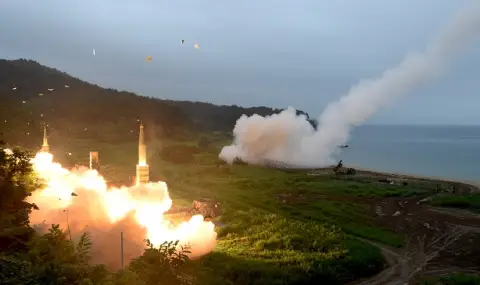Ukraine has been asking the US for long-range ATACMS missiles since 2021, and the White House has consistently resisted, at least publicly. But the trend may be reversing, writes Defense One.
On Thursday (March 28), the chairman of the US Joint Chiefs of Staff, General Charles K. Brown, told reporters that "the risk of escalation is not as high as it might have been at the beginning.
Russian statements in September 2022 stated that providing Ukraine with such weapons would cross a "red line" because their range would allow Ukraine to target Moscow. Gen. Mark Milley, then chairman of the Joint Chiefs of Staff, told Defense One at the time: "People in academia, think tanks or other forms of analysis call it 'declarative policy' when senior officials . . . make statements, predictive statements about what they would or would not do if certain actions occurred."
Senior military officials, speaking in the background, point to Russian military doctrine that is linked to the so-called an "existential risk", saying that providing Ukraine with such weapons could prompt a nuclear response from Russia or prompt it to attack a NATO partner.
Since the fall, there have been reports that the United States may have miscalculated and is secretly sending a small number of long-range missiles -- despite the fact that the White House has previously said it does not have enough to send.
But the Biden administration is careful not to confirm or deny these reports.
As recently as March 20, White House National Security Adviser Jake Sullivan stated: "I have nothing to announce publicly on this matter today. When we have something to share, we will definitely share it."
Brown also has not officially confirmed or denied the announcement, but has said that Russia's muted response to a series of recent attacks by Ukrainian drones well into Russian territory has allowed the Pentagon to adjust its analysis of the risk of deploying ATACMS.< br />
"These are the things we... pay attention to. You know what the likelihood of escalation is based on... different options and different actions," he said.
Observers and even some Republican lawmakers are pushing for the US to send the missiles because they would allow the Ukrainians to hold Russian positions in Ukraine at risk, including Crimea, far from the front lines, including from far away. could continue to strike even the most fortified Russian positions in the eastern part of the country from practically any other point in the country. This, in turn, would make it difficult to reinforce troops, even if Russia were to seize more territory.
Recently, Ukraine has been losing territory, and according to some experts, if Congress does not pass the additional $60 billion aid package for Ukraine, Russia may seize more territory.
Brown has again encouraged swift passage of the additional package and said Ukraine will face sustained artillery fire for the foreseeable future. But he also said fears of a massive Russian offensive in the spring may be overblown.
"I don't know if the Russians can mount a major offensive. I mean, if you look at... what's happened over the... last year, the Russians actually threw a lot of capabilities and personnel and weapons systems and vehicles at it to win what they won. And the way they do it is almost like a meat grinder."
Missile war! Pentagon to transfer more ATACMS to Ukraine
Recently, Ukraine has been losing territory, and according to some experts, if Congress does not pass an additional $60 billion aid package for Kiev, Russia could gain more ground
Mar 29, 2024 21:51 293
